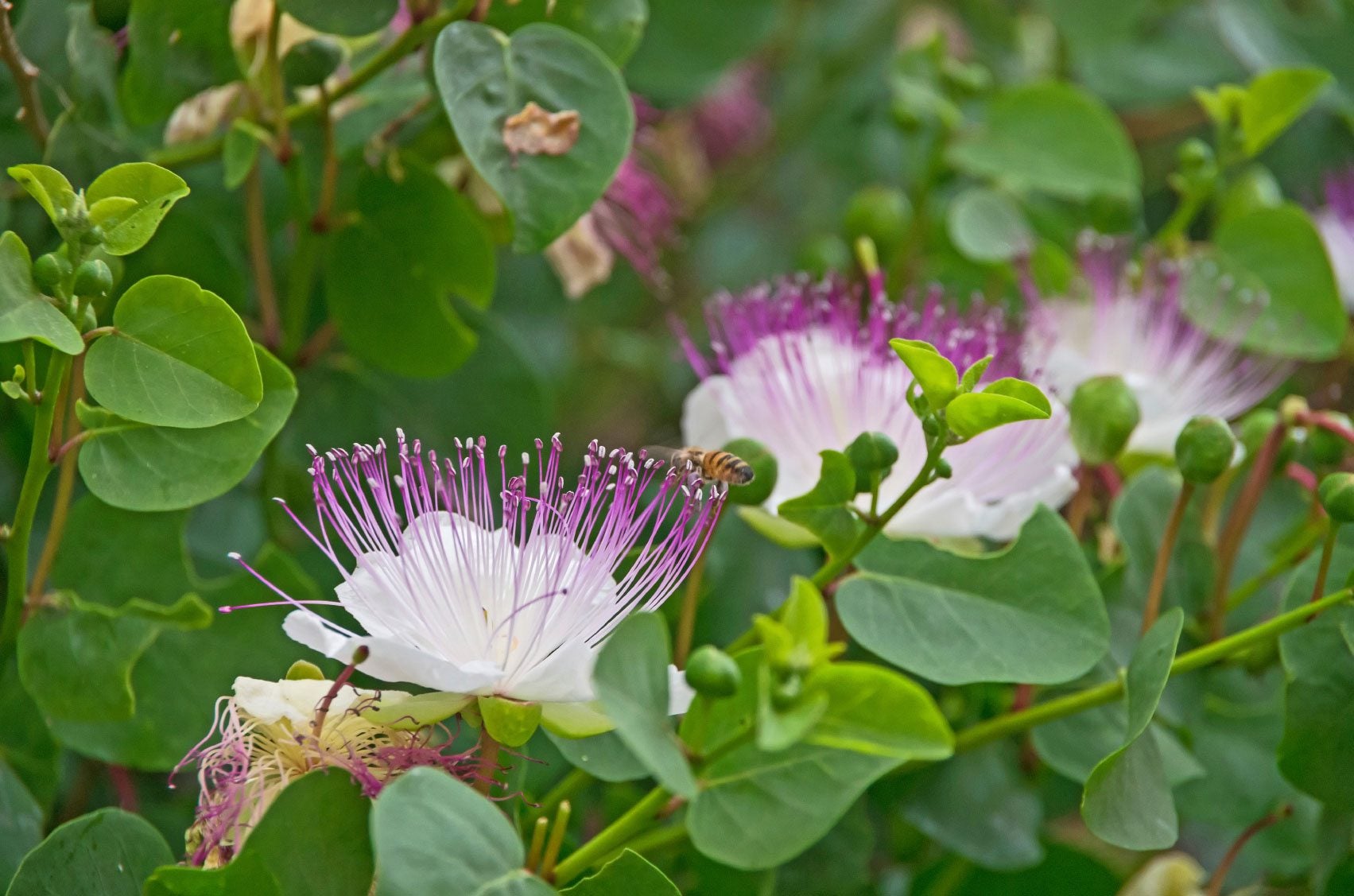How To Grow Capers: Learn About Growing And Caring For Caper Plants

What are capers and how are they used? Capers, unopened flower buds found on the caper bush, are the culinary darlings of many cuisines. Capers can be found in European foods and in those of Africa and India as well, where cultivation of growing capers is found. Growing a caper bush, however, is not an easy task.
What are Capers?
Caper plants (Capparis spinosa) are usually found growing wild in the Mediterranean in dry stony areas similar to those where olives are grown. Capers grow in viney brambles, much like blackberries do in North America. Cultivation of a caper bush is most often found in Spain and Africa, but in the past, Southern Russia was also an exporter. Growing capers are, as mentioned, the buds of a shrub-like perennial (3 to 5 feet (1 to 1.5 m.) high), which has a multitude of spiny branches bearing 2-inch (5 cm.), white flowers with purple stamens.
What are Capers Used For?
So how are capers used? The tiny buds of the caper bush, or Capparis spinosa, are picked on a daily basis and then pickled in vinegar or otherwise brined in salt. The resulting flavor of the caper berry is strong and distinct--like that of mustard and black pepper--due to its concentration of mustard oil, which is released when the plant tissue is crushed. This piquant flavor and aroma lends itself well to a variety of sauces, pizzas, fish meats, and salads. The immature leaves growing on a caper bush may even be eaten as a cooked vegetable and the burnt remnants of the growing caper bush roots have been utilized as a salt substitute. Caper fruits (caperberry, capperone, or taperone) may be used in making caper-flavored sauces or sometimes pickled for eating like small gherkins. A caper bush also has medicinal uses. Growing capers may be harvested to aid in eliminating flatulence, improving liver function, or for its anti-rheumatic effects. An age-old remedy, growing capers have also been reputed to be useful in treating arteriosclerosis, kidney ailments, diuretics, anemia, arthritis, gout, and dropsy.
How to Grow Capers from Seed
Growing a caper bush can be achieved via propagation from seed, although finding a seed source is more of a challenge. If seed for growing capers is located, one may try growing them in a large pot with a base of coarse rock or crumbled brick. Take care not to overwater as the plant's foliage is a natural water conservator. Caper seeds are very tiny and germinate readily but in low percentiles. Dried seeds are more difficult to germinate and should be soaked for one day in warm water, then wrapped in damp towel, sealed in a jar, and refrigerated for two to three months. Post refrigeration, re-soak seeds overnight and then plant at a depth of 0.5 inches (1 cm.) in a well-drained medium.
How to Grow Capers from Cuttings
Collect growing caper berry cuttings in February, March, or April using basal portions with six to ten buds. For growing a caper bush, seat cuttings in a loose, well-draining soil medium with a heat source at the base. Dipping the stem cutting in a bit of rooting hormone first is also beneficial.
Caring for Caper Plants
Caring for caper plants requires a steady stream of strong sunlight and an arid climate. Growing caper plants have a hardiness range similar to olive trees (18 degrees F. or -8 degrees C.) and can also tolerate summer temperatures of over 105 degrees F. (41 degrees C.). When growing a caper bush, the plant itself is quite tolerant and develops deep root systems, to better avail itself of its resources in a difficult environment. When harvesting, size matters. Growing capers are divided into five distinct groups. When growing a caper bush, buds are picked at the immature stage and categorized according to size: nonpareils, capuchins, capotes, seconds, and thirds—with the nonpareils being the most prized -- and most expensive. In Italy, capers are graded on a scale from 7 to 16, which indicates their size in millimeters.
Gardening tips, videos, info and more delivered right to your inbox!
Sign up for the Gardening Know How newsletter today and receive a free copy of our e-book "How to Grow Delicious Tomatoes".

Amy Grant has been gardening for 30 years and writing for 15. A professional chef and caterer, Amy's area of expertise is culinary gardening.
-
 Looking For Plants To Give You The Soft And Fuzzies? Try These 5 Fuzzy Leaf Plant Options
Looking For Plants To Give You The Soft And Fuzzies? Try These 5 Fuzzy Leaf Plant OptionsLovers of texture, drama, silver foliage and tactile plants will adore these special sensory garden additions. These fuzzy leaf plant options will leave you all aglow
By Susan Albert
-
 Get Ready For A Summer Of Hummers! Grow These Full Sun Hummingbird Plants and Flowers
Get Ready For A Summer Of Hummers! Grow These Full Sun Hummingbird Plants and FlowersIf you’re lucky enough to enjoy a sunny backyard, make sure you are maxing out on your pollinator opportunities and grow these full sun hummingbird plants and flowers
By Tonya Barnett